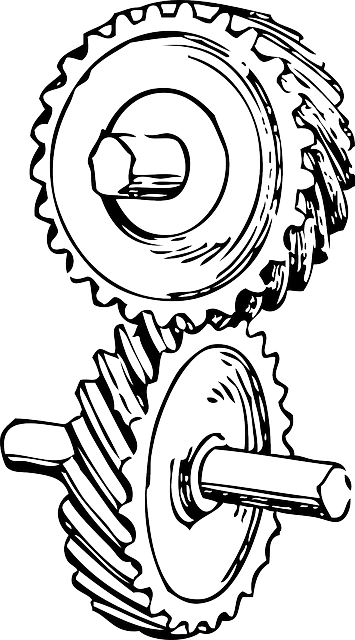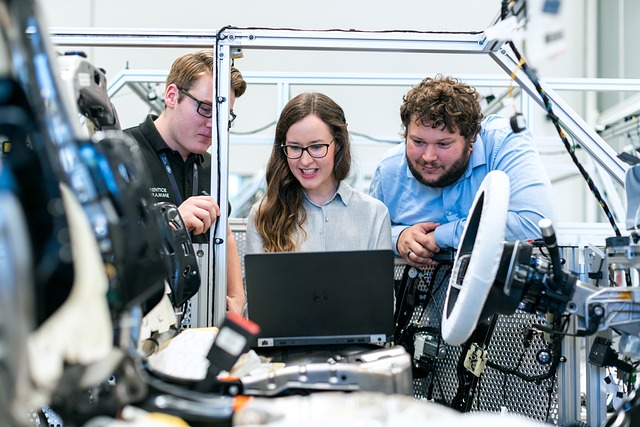Assess your interest and aptitude for aerospace engineering by considering your passions, skills, and comfort with problem-solving, math, physics, and computer science. Build a strong foundation with rigorous high school courses in mathematics, physics, and computer science, including AP or IB programs. Supplement textbook learning with practical projects to deepen understanding and develop critical thinking. Focus on advanced math, physics, and programming for problem-solving and logical reasoning skills. Learn essential programming languages and CAD software for aerospace tasks. Prepare for standardized tests like the SAT or ACT to meet university admission requirements.
Getting Ready to Soar: Your Essential Guide to Preparing for Aerospace Engineering
Are you dreaming of designing the future of flight? A degree in aerospace engineering opens doors to groundbreaking innovations, but it requires a solid preparation journey. This comprehensive guide arms aspiring engineers with the knowledge and tools needed to excel. From cultivating crucial skills like problem-solving and math prowess to exploring high school courses and hands-on projects, every step builds a foundation for success. Discover the essential tips and resources to navigate your path from high school to university, ensuring you’re ready to conquer the challenges of aerospace studies.
- Assess Your Interest & Aptitude for Aerospace Engineering
- Strengthen Math & Science Skills: Building Blocks of Aerospace
- Explore High School Courses: Preparation for University Level
- Supplement Textbook Learning with Hands-on Projects
- Build a Strong Academic Foundation: Key Universities & Programs
- Cultivate Problem-Solving & Critical Thinking Abilities
- Develop Programming and Computer Aided Design (CAD) Proficiency
- Prepare for Challenging Exams: Application & Admission Requirements
Assess Your Interest & Aptitude for Aerospace Engineering

Before diving into your aerospace engineering studies, it’s crucial to assess whether this field aligns with your interests and aptitudes. Aerospace engineering is a highly technical and demanding discipline that requires a strong foundation in mathematics, physics, and computer science. If you find complex problems engaging, enjoy applying scientific principles to real-world scenarios, and are fascinated by the challenges of designing and building aircraft or spacecraft, then aerospace engineering might be the right path for you.
Reflect on your past experiences, particularly any projects or courses that sparked your curiosity in this field. Consider your comfort level with problem-solving, analytical thinking, and working with both theoretical concepts and practical applications. This self-assessment will help guide you towards the necessary pre-requisite courses and extracurricular activities that will build a strong foundation for your future aerospace engineering studies.
Strengthen Math & Science Skills: Building Blocks of Aerospace

Math and science are the cornerstones of aerospace engineering, playing a pivotal role in every aspect of design, analysis, and problem-solving. To excel in this field, future engineers must develop a strong foundation in mathematics and scientific principles from an early stage. High school courses in algebra, geometry, trigonometry, physics, and chemistry lay the groundwork, providing essential tools for understanding complex aerospace concepts.
Encourage your high schooler to challenge themselves with advanced placement (AP) courses or International Baccalaureate (IB) programs if available, as these offer more in-depth exposure to mathematics and science, fostering a deeper understanding that will benefit them throughout their university studies and future career. Additionally, practicing problem-solving skills through extracurricular activities like math competitions or science fairs can help cultivate critical thinking and analytical abilities crucial for aerospace engineering.
Explore High School Courses: Preparation for University Level

Exploring high school courses is a great way to prepare for the rigors of university-level aerospace engineering studies. Many high schools offer advanced placement (AP) or International Baccalaureate (IB) courses that can provide a solid foundation in mathematics, physics, and computer science—core subjects essential for aerospace engineering. These courses not only offer college credit but also give you a head start on the theoretical knowledge required for your degree.
Focusing on math and physics is crucial as these subjects are the backbone of aerospace engineering. AP Calculus, Physics, and Computer Programming courses will equip you with the problem-solving and analytical skills needed to tackle complex engineering challenges. Additionally, participating in STEM clubs or projects can offer hands-on experience and help you build a portfolio, which can be valuable when applying to universities.
Supplement Textbook Learning with Hands-on Projects

Supplementing textbook learning with hands-on projects is pivotal for aspiring aerospace engineers. Theory, as presented in textbooks, forms a solid foundation, but applying it practically strengthens understanding and develops critical thinking skills. Engaging in building models, conducting simple experiments, or participating in school or community science fairs allows you to test theories, analyze results, and learn from both successes and failures.
These hands-on experiences not only deepen knowledge of physics, mathematics, and engineering principles but also foster creativity, problem-solving abilities, and resourcefulness—essential qualities for navigating the complex challenges of aerospace design and development.
Build a Strong Academic Foundation: Key Universities & Programs

Building a solid academic foundation is paramount when preparing for a degree in Aerospace Engineering. High school students aspiring to study aerospace should focus on rigorous mathematics, physics, and computer science courses. These subjects are the bedrock of aerospace engineering principles and will equip you with the necessary problem-solving skills. Seek out advanced placement (AP) or International Baccalaureate (IB) courses if available, as they can provide a challenging preview of college-level material.
Consider exploring introductory astronomy and geology courses, which offer valuable insights into space exploration and the physical world. Additionally, developing strong writing and communication skills is essential for aerospace engineers who often collaborate on complex projects. Look for opportunities to engage in debate or speech clubs, as well as enhancing your technical writing abilities through science fairs or research projects. Targeted preparation in these areas will set you up for success when applying to prestigious universities known for their Aerospace Engineering programs, such as MIT, Stanford, and CalTech.
Cultivate Problem-Solving & Critical Thinking Abilities

Cultivating robust problem-solving and critical thinking abilities is paramount for aspiring aerospace engineers. These skills are not just beneficial but essential for tackling complex, real-world challenges in the field. During your high school years, actively engage with subjects that encourage logical reasoning and mathematical modeling, such as advanced mathematics (calculus, linear algebra), physics, and computer programming. These disciplines provide a solid foundation for understanding the intricate dynamics of aerospace systems.
Beyond academic coursework, participate in activities that foster analytical thinking and creativity. Debating clubs, robotics teams, or even puzzles and board games can sharpen your ability to approach problems from different angles, evaluate solutions critically, and think outside the box. Developing these skills will not only help you excel in your aerospace engineering courses but also prepare you to contribute innovatively to the field.
Develop Programming and Computer Aided Design (CAD) Proficiency

Developing programming skills is crucial for aerospace engineering students as it forms the backbone of many design and simulation processes. Familiarize yourself with at least one popular programming language such as Python, MATLAB, or C++. These languages are widely used in the industry for data analysis, model development, and automation tasks. Online platforms offer numerous resources to learn these languages from beginner to advanced levels, ensuring a solid foundation before university.
Computer-Aided Design (CAD) software is another essential tool for aerospace engineers. It allows for precise 3D modeling of aircraft components and systems. AutoCAD, SolidWorks, and CATIA are some industry-standard CAD programs that universities often teach. Building proficiency in these tools early on will not only make the transition to university courses smoother but also provide an advantage when applying for internships or jobs in the future.
Prepare for Challenging Exams: Application & Admission Requirements

Preparing for challenging exams is a significant part of your journey towards a degree in Aerospace Engineering. Universities often require standardized tests like the SAT or ACT, so ensure you’re well-prepared for these. Additionally, many aerospace programs have specific admission requirements, including high school courses in math (calculus, physics), science (chemistry, biology), and engineering fundamentals. Don’t underestimate the importance of studying for these exams and meeting the prerequisite course load. A solid foundation in these areas will not only improve your chances of admission but also set you up for success in your aerospace engineering coursework.
Preparing for a degree in aerospace engineering requires a combination of academic rigor, practical experience, and a genuine passion for the field. By assessing your interest, strengthening math and science skills, exploring relevant courses, engaging in hands-on projects, and cultivating problem-solving abilities, you can build a solid foundation for your future studies. Remember that each step, from improving your CAD proficiency to preparing for admissions exams, is crucial in navigating the challenging yet rewarding path of aerospace engineering.
